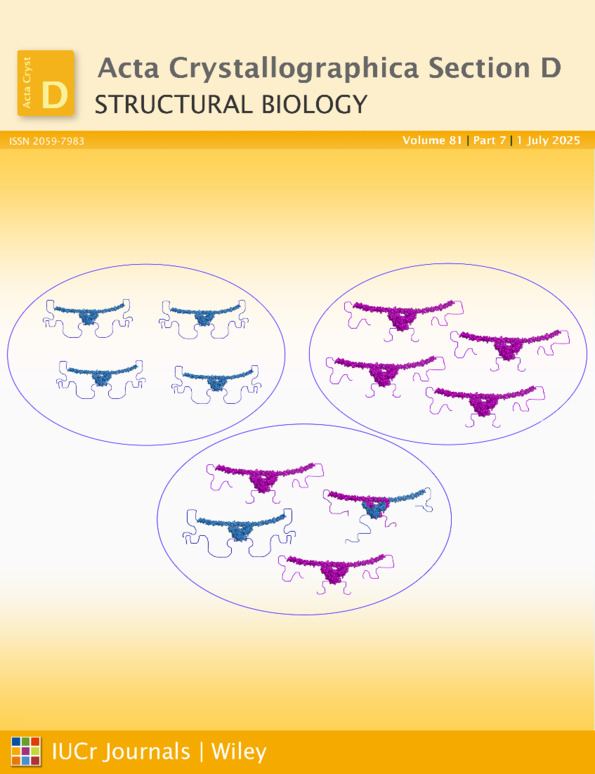Ab initio crystal structure determination of spherical viruses that exhibit a centrosymmetric location in the unit cell
Abstract
Ab initio phasing by non-crystallographic symmetry averaging coupled with solvent flattening has previously been used to determine the structure of canine parvovirus [CPV; Tsao et al. (1992), Acta Cryst. A48, 293–301; Chapman et al. (1992), Acta Cryst. A48, 301–312]. As CPV particles were located at general positions, initial phases were generated with a spherical shell deviating from the centre of symmetry. In many virus crystals, the viral particles are located at positions with a centre of symmetry in the unit cell. Thus, the initial phases calculated with a spherical shell model have a centre of symmetry. The inherent difficulty in structural determination was breaking the centre of symmetry in the initial phase. The centric nature of the initial phases of the rice dwarf virus crystal, however, was successfully broken at low resolution by iteration of the density-modification method described by Tsao et al. (1992) [Naitow et al. (1999), Acta Cryst. D55, 77–84]. In this study, ab initio phasing was tested for seven viruses ranging from 82 to 344 Å in radius. Although the crystal structures of the initial spherical shell models for each virus had a centre of symmetry, the centric natures of the initial phases were successfully broken by non-crystallographic symmetry averaging coupled with solvent flattening at a low resolution; these phases were then successfully extended to high-resolution measurements. A novel procedure of ab initio phasing for spherical virus crystals is proposed.




